What are the main rules for soccer (Explained!)
When learning the game of soccer, it’s always a good idea to study and understand before stepping on the field. After doing extensive research, here are the most important main rules for playing soccer! Make sure to keep reading!
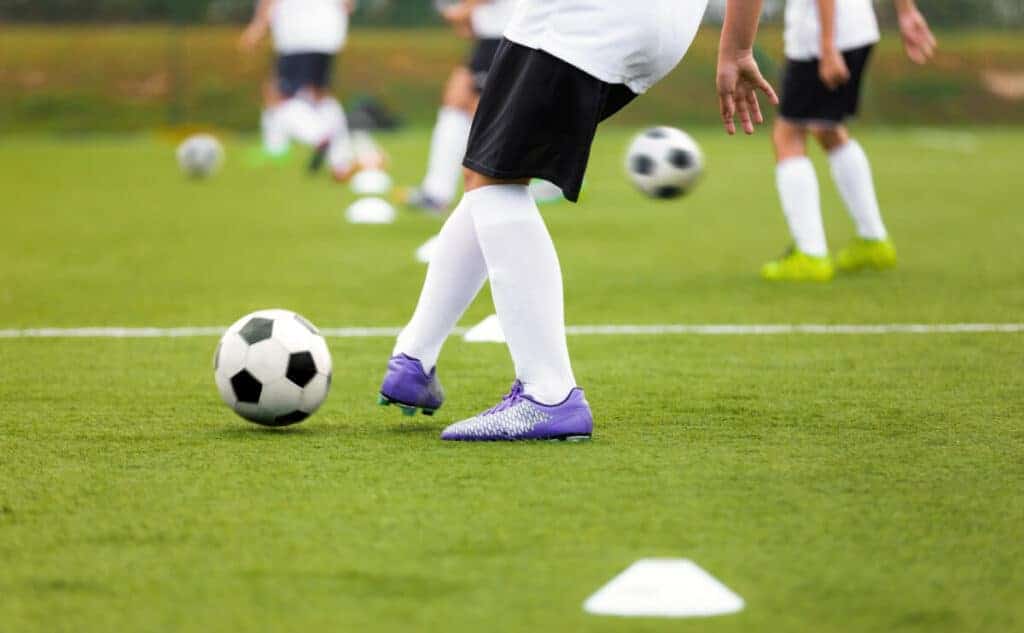
To play soccer, two teams of no more than 11 players each kick a ball on a field and into the net of the opposing team’s goal while making sure not to touch the ball with their hands. There are further rules and nuances to the game, beginning matches with a coin toss, and subbing players in and out.
There are plenty more tips and tricks and rules for playing soccer besides those mentioned above. What else should someone know before kicking their first soccer ball in a game? Let’s go over what to know when going head-to-head in a good old-fashioned game of soccer!
Soccer Team Details
For the main rules of soccer, soccer teams can be made up of up to as many as 18 players, sometimes more depending on where the game is being played.
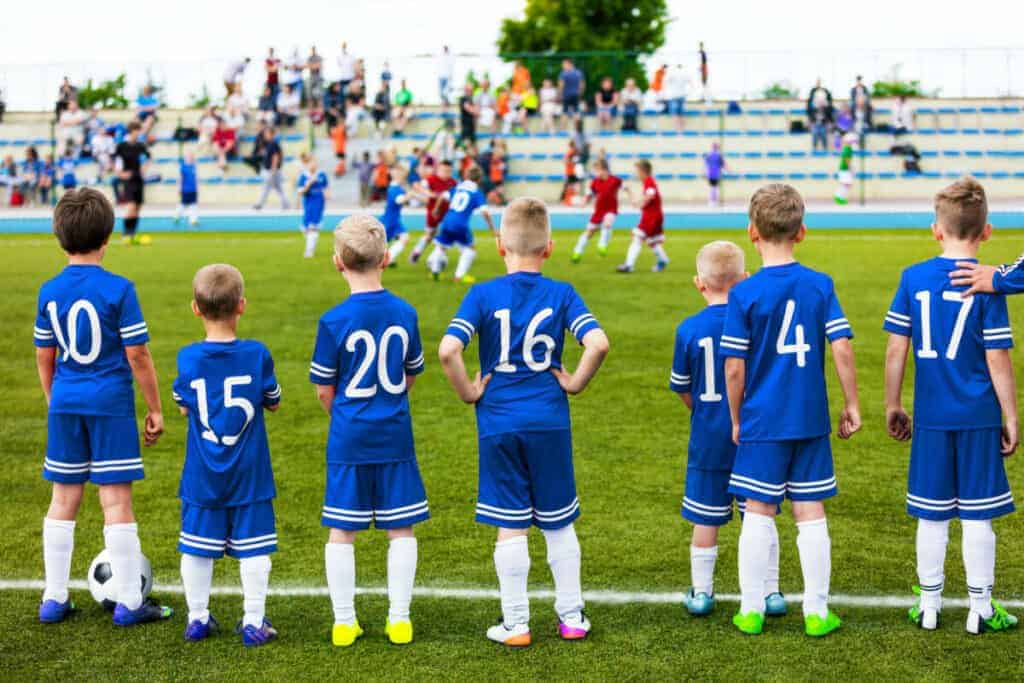
However, no more than 11 players are allowed to play on the field at the same time for each team, and each team must have a minimum of 7 players on the field for their team. If a team only has 6 players or fewer, they will have to forfeit the game.
With a maximum of 11 players on the field for a team, one of them being the goalie, there are then 10 players stationed at certain parts of the field, each with their unique roles and focuses in the game.
Game Lengths
Soccer matches are split into two 45-minute-long halves per game. There is a 15-minute break between each 45-minute half of the game.
Soccer seasons will have varying amounts of games in each season, depending on the particular soccer league and the number of teams that are in them.
The more soccer teams there are, the more games there will have to be played in order to make sure every soccer team gets to play each other at least once, and so on and so forth.
Some matches can go into overtime. This would consist of 2 halves that last 15 minutes long. Both teams would play until one of them scores, resulting in a winner.
Starting a Match
Soccer games are begun with a coin toss between team captains, with the winning captain getting to choose which goal to defend or to take the first kickoff from.
From here, there is a kick-off at the beginning of the game, and after every goal from the center circle of the field. During the kickoff, all players need to be on their respective team’s side of the field.
Also, the only player allowed in the center circle is the player kicking off the ball. After the kickoff, the ball is officially in play until it gets kicked or rolls out of bounds, or if the referee calls a foul or penalty later.
Player Rules

One of the most well-known rules about soccer players is that none of them can purposefully touch the ball with their hands or arms unless they are the goalie.
Players are restricted to only using their feet, head, or chests as points of contact with the ball during the game.
Each player on the field has a specific role in the game. Defensive positions include the goalie or goalkeeper, who is the last line of defense in soccer since they keep the ball out of the net. Goalies get to kick, punch, or catch the ball in order to keep it out of the goal.
Defenders are tasked with protecting the goal of their own team, while also giving support for attacks on the other team, often but not required to play on their side of the field.
Center-back players in the game are often the defenders in the middle of the defensive formation, with more than one on the soccer field being allowed for the game. They often block shots and head away balls while they’re in play.
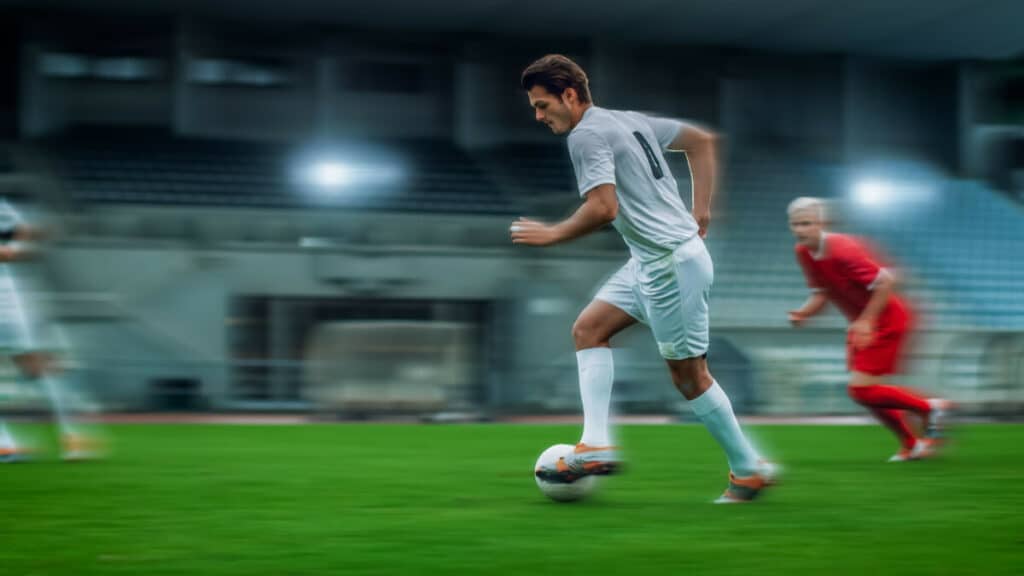
Full-back players are also called left-backs and right-backs, playing on the edge of the defense while they ‘shut down’ the other team’s wingers.
Sweeper players are the furthest players in the back of the field, near the goalies. These players are behind the center-backs and defend the goal no matter what.
Midfield players include central midfielders, defensive midfielders, attacking midfielders, and wide midfielders, with roles linked to their names that are stationed in the corresponding middle regions of the field.
Finally, forwards in soccer can be in the position of center-forwards/strikers, withdrawn, second, and deep-lying forwards.
Soccer Uniforms
Members of soccer teams have specific expectations and guidelines for how they prepare themselves for games. When preparing for and dressing to play a soccer match, always don a T-shirt or jersey in the color of the team one is on.
The tops are almost always short-sleeved, but long-sleeved shirts or athletic wear can be worn under the game shirt or jersey if the weather turns sour and cold.
For bottoms, shorts should be worn, often athletic shorts made out of lightweight material and cinched with elastic waistbands.
In order to stay safe and sound, long socks and shin guards need to be placed on the feet and ankles of all players.
Some places also require this equipment to be worn during practices in addition to real games. It is definitely better to be safe than sorry.
Even face masks, headgear, and other safety sports material created to pad or shield parts of the body are often allowed by most soccer leagues, but make sure to double check that they are allowed and authorized to avoid possible disqualification!
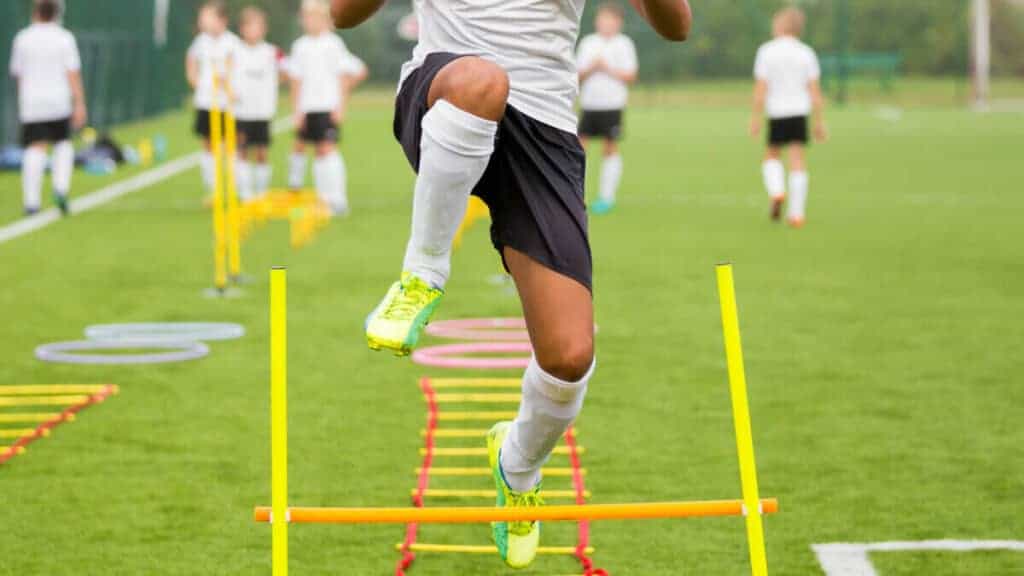
For the feet, official soccer shoes are made in plenty of unique styles and colors. Usually soccer cleats are used to play official games and when practicing the game on outdoor or natural surfaces.
This is because cleats are molded in the bottoms of these soccer shoes, and can even be removed and detached or reattached, which help add traction when running on unstable or slippery grounds.
When playing soccer indoors or on artificial outdoor turf, soccer shoes with patterns and grooves on the underside, instead of spiky cleats, are best.
Referees will often double check the bottoms of game shoes to make sure cleats are maintained well and are not so sharp that they may harm other players.
Substitutions

Each team gets to pick up to 7 substitutes for their side. Subs can be made at any point of the match, with each team being able to make a maximum of 3 substitutions per side.
If all 3 substitutions are made in the event of player injuries, the team will need to play without a replacement. Substitutions can also be enacted if a team wants to put a different player in the game.
Goalie Rules
Goalies, also called goalkeepers, occupy a special role in soccer matches since it is only these players are allowed to use their hands–but only within their designated goal area!
Regular players can only touch the soccer ball during play when attempting to “throw in” the ball after it has traveled out of the bounds of the field.
It’s good to know that in soccer, “hands” indicates anything from the fingers all the way to the shoulders.
Point of the Game

During the overall game, each team is trying to score a goal against the other side, which they accomplish by kicking or heading the soccer ball into the opposite team’s goal at the other end of the field.
The ball needs to entirely cross the goal line within the frame of the goal box at either side of the field.
By the end of the game the winner is the team with the highest goal point total, barring the circumstantial need for extra time. Sometimes a tie must be broken if one occurs in a game.
Equipment
As far as rules for the equipment of the game, the soccer ball must of course be spherical shape-wise and is often made of leather or similar materials.
The soccer ball circumference is usually between 27 to 28 inches as well, however, younger youth leagues and teams of children may use a smaller game ball suited to their level and size.
Rules of the Game
The soccer field will have white lines painted over the grass to designate the playing field. Should the soccer ball be kicked or rolled outside of these sidelines, it is then thrown back in by the team that was not the last to touch the ball.
When throwing the ball back into play, it has to be thrown from behind and over the head, while using both hands. When the ball leaves the thrower’s hands, both of their feet need to be touching the ground.
Additionally, as long as the soccer ball is on the field and within the bounds, then the game is considered “in play.”
The only exception that happens with this guideline is when the ref calls for an offside or infraction. Offsides are only called in games where the players are aged 11 or older.
Referees
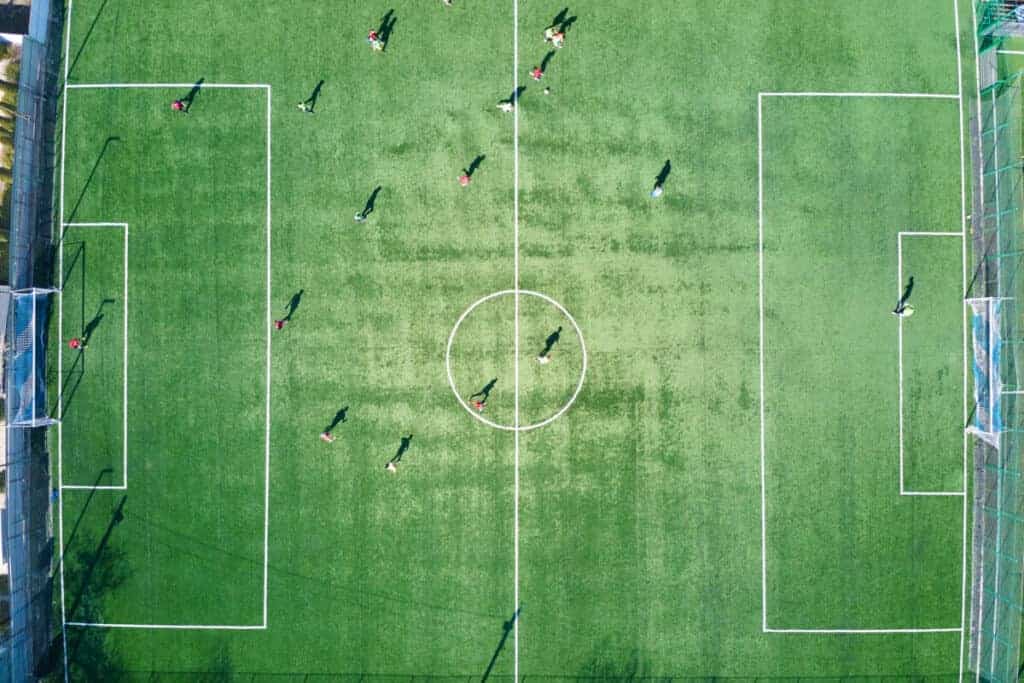
There is a central referee in soccer, and two linesmen, also known as two assistant referees. These people award free kicks and penalties when the rules are broken.
If a player consistently breaks rules over and over, or in the case of a bad foul, the offending player may be sent off the field.
Fouls
When it comes to fouls in soccer, there a few things to keep in mind. It is always the job of the coach and the referee to watch the play and fouls closely.
They ensure that players are focusing and going for the soccer ball instead of their opposing players.
Players should not and are not technically allowed to jump at, kick, charge, push, strike, punch, or hold an opponent on the other team.
If and when fouls happen, the team who was fouled gets a direct and free kick right at the direction of where the foul happened.
In Case of a Tied Game

When both teams are tied up with the same score at the end of a game, there are a few options to break the tie.
The game may go into extra time, or overtime with a 30-minute block of time added in the form of two 15-minute halves after the usual 90 minutes of game time are over.
Should the teams still be tied up after the extra time, a penalty shootout will be used to decide the final winner.
Further Resources
For those who want further instruction in soccer, there are thankfully hundreds of helpful videos covering this subject online!
This following video is one of many great summaries of the dos and don’ts of soccer games, so give it a watch for a quick refresher whenever it’s needed!
Soccer Rules Summary
For a quick overview of the most important things for soccer, keep in mind the following! To win a soccer match, one team must score and earn more points than the opposing team, and this may take as long as 90 minutes which is halved into two 45 minute portions.
Should the teams be stuck in a tie with each other by the end, two 15 minute portions can be added to the game to break the tie, or the tie can be broken with a penalty shootout if the tie persists even after the extra time add-on.
There are always 11 players on the pitch for each team in soccer, and they must get the soccer ball in the opposing team’s net in order to gain points and goals. Each team needs to have a chosen goalkeeper or goalie at all times.
It is only these goalies/goalkeepers that can touch or handle the soccer ball with their hands, when the ball enters their personal 18-yard box. Normal players can only move the soccer ball by using their feet, chests, or heads.
Try to keep in mind, when players are charged with fouls, the opposite team then gets to have a free kick, if the foul happened outside of the 18-yard goalie box area. They earn a penalty kick when the foul happens within the 18-yard box.
It is only referees that can give players warning or limiting yellow or red cards. Players may warrant getting a red or yellow card if they are racking up multiple fouls and if they are playing in a dangerous way against other players on the field.

The game of soccer is a thrilling past time that encourages teamwork, endurance, and personal integrity and dedication.
Reading through the above rule summary will serve all who read as a great refresher before forming a team or playing a match of soccer.
If players, referees, coaches, and goalies always stay current on soccer rules, they will be able to have a blast playing this famous sport while also keeping each player safe.
More Soccer Articles
- What are the main rules for soccer
- Why do soccer players fake injuries?
- What soccer position is hardest to play: Here’s why!
- Can soccer referees have tattoos
- Can Soccer Players Wear Earrings?
